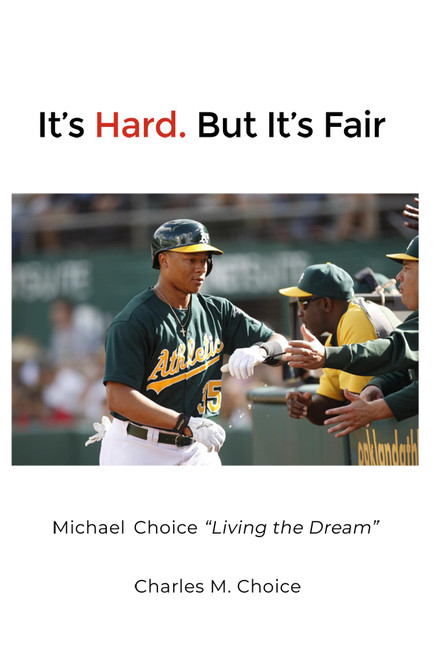Product Overview
Tort Law and How It’s Tied to Our Culture
By: M. Stuart Madden, Esq.
About the Book
Tort Law and How It’s Tied to Our Culture is a socio-legal history of the norms, customs, and eventual private laws of civil remedies for wrongs, or Tort. Oliver Wendell Holmes described law as “a grand anthropological document.” This can be said with even greater force of Tort Law, the most dynamic field within the Common Law. Whether in the form of an unwritten lesson of a myth or folktales, or rendered as written law, Tort Law reflects a culture’s superego, a guide to what individuals ought forego doing in the interest of a community’s safety, dignity, and prosperity. The work provides an entertaining and scholarly tour of Tort Law from its beginnings in the unwritten oral traditions of folktale and myth, through the ancient law codes of Mesopotamia and the cohering work of the Greeks and the codifications of the Romans and later Gothic groups, to early religious recitations of behavioral ethics. Separate treatment is afforded the vital role of the Common Law in an increasingly statutory age, exemplary or punitive damages, and the congruence between the application of tort-type remedies in the English-speaking Common Law nations and the significant number of Civil Code nations applying law more directly descended from Roman Law and the Napoleonic Code.
As a work of legal scholarship, M. Stuart Madden’s Tort Law and How It’s Tied To Our Culture is well off the beaten track -- which is precisely what makes it so rewarding. A recognized authority on tort law in general and product-liability law in particular, Madden widens our perspective on his subject to encompass historical, anthropological, and even philosophical factors, alongside the purely legal. The benefits are significant, not only to the legal community but to laymen like myself.
The author begins with a description of tort law as the latest iteration of a mechanism as old as civilization itself and in fact vital to its construction: formalized means of mediating disputes within a community without recourse to blood feuds and clan loyalties. He lists the sorts of conflicts that beset early nomadic, pastoral, and tribal groupings no less than modern ones (e.g., disturbing the peace, manslaughter, assault, trespass, theft, defamation, etc.), then charts the various paths by which some form of material compensation gradually came to replace physical punishment or violence in the adjudication of those conflicts by whatever council, chieftain, or other authority secured the power to resolve them. The moral norms these communities came to evoke and enforce in the process, Madden proposes, were rooted in ancient mythologies and folklore, just as the norms we moderns evoke are rooted in our own religious and philosophical inheritance. All this serves to lay a firm foundation for the author’s eventual description of tort law as, universally, a kind of “societal superego,” encoding “society’s revealed truth as to the behaviors it wants to encourage and the behaviors it wants to discourage (pp. 296, 291). In short: tort law, in one way or another, has been around from the very beginning, and its development has always both reflected and encouraged the moral maturation of those abiding by it.
Madden returns again and again to the theme of tort law’s adaptability, and its role in what we might call the civilizational process. On that subject, he has interesting things to say about the legal codes of ancient Greece (mainly Athens) and Rome. But the most illustrative case-studies in this section of the book are to be found in the author’s analyses of the various Germanic peoples’s encounters with Roman law and the civilization it effectively bonded, as the German tribesmen strove first to incorporate themselves into the Roman world and then to construct its replacement as it crumbled. In fact, one of the book’s several tours de force is a nuanced, compelling account of how the Goths, in particular, selectively incorporated Roman law into their own codes and Roman norms into their own culture to produce a hybrid civilization, “the progressiveness of which, when seen relative to its own time, stood on an equivalence with any other populations of the early Middle Ages” (p. 150).
That, however, is not the only meaty discussion here. A little more than midway through the book, Madden fuses his consideration of tort law with a broader consideration of the common law itself. His main interest here lies in defending the common law from claims that it has been marginalized by the enormous expansion of statutory law since the 1960s, i.e., the suggestion that common law now serves as little more than “background music for a modern statutory lyric” (p. 192). On the contrary, in Madden’s view, those who would consign to irrelevance a tradition “which for 800 years has woven the custom and morality of English-speaking nations into the fairest dispute-resolution mechanism ever devised” have both overstated that tradition’s weaknesses and undervalued its strengths (p. 192).
Madden himself is neither blind to those weaknesses nor naïve about those strengths. His inventory of the common law’s liabilities include its internal contradictions; its conferral of expansive powers on judges; its occasionally “cavalier” treatment of stare decisis; and more. His reckoning of its merits stresses its responsiveness to case particularities; its adaptability and capacity for growth; and, above all, its embeddedness in broader moral commitments. In fact, the heart of this section of the book is the author’s consideration of the moral dimensions of common law -- which, he argues, encompasses varied strands of moral reasoning that cannot and do not coexist without tension. There is a “utilitarian” inflection, which Madden understands as a stress on the maximization of social benefit (defined, usually, in terms of wealth-generation). But that sits uneasily with the common law’s historic role in providing “corrective justice” in areas of private concern, or the “remediation of the plaintiff’s wrongfully-caused harm” whatever the effects on economic efficiency. What precludes a destructive divergence of those separate strains of common-law morality, Madden feels, is the leavening effect of American cultural history itself, favoring such threads of the common-law tradition as American society prioritizes at a given time without ever fully submerging the other. Notably, the “polycentric” variety of legal reasoning carried within our common law has been effective despite its limitations and internal stresses, and widely applicable despite its case-specific focus, precisely because it lives “at the borders of societal and business dynamics” where “pre-existing doctrinal propositions do not provide a clear answer” (p. 206).
As a vital component of the common-law corpus, tort law in Madden’s judgment has midwifed “an unequaled American commitment to personal freedom, opportunity, dignity, and mutual expectations” (p. 257). Its treatment here, then, concludes with a paean to tort law’s historic contributions to “the magisterial human experiment in moderation, fairness, efficiency, equality, and justice in social groupings.” By the time they finish it, most readers of this well-researched, absorbing, and illuminating book will agree. - Prof. John J. Cerullo
About the Author
M. Stuart Madden is Past Distinguished Professor of Law at Pace University School of Law. He continues to research, write, and publish on legal matters with a recent emphasis on Ancient Law, Ethics, and Socioeconomics. His publications have been relied upon in numerous judicial decisions and academic articles. He lives in White Plains, New York, with his wife, Sandra, with whom he enjoys native gardening of nectar and pollen-producing plants, and also home renovation.
(2019, eBook)







